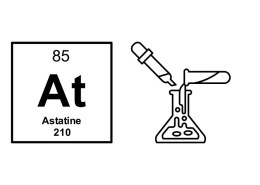Which Elements Have the Most Similar Chemical Properties?
When exploring the periodic table, one of the most fascinating aspects is how elements are grouped based on their chemical properties. Understanding these groupings can help predict how elements behave in reactions, their bonding tendencies, and their overall roles in chemistry. So, which elements have the most similar chemical properties?
Elements in the Same Group Share Similar Properties
The periodic table is organized into rows and columns, with the vertical columns referred to as groups. Elements in the same group have the most similar chemical properties because they share the same number of valence electrons — the electrons in their outermost shell. These valence electrons determine how an element interacts with others in chemical reactions.
Examples of Groups with Similar Properties
1. Alkali Metals (Group 1):
- Elements: Lithium (Li), Sodium (Na), Potassium (K), Rubidium (Rb), etc.
- Similar Properties:
- Highly reactive, especially with water.
- Form +1 ions by losing one valence electron.
- Soft metals with low melting points.
2. Alkaline Earth Metals (Group 2):
- Elements: Beryllium (Be), Magnesium (Mg), Calcium (Ca), Strontium (Sr), etc.
- Similar Properties:
- Reactive, though less so than alkali metals.
- Form +2 ions by losing two valence electrons.
- Found in compounds like limestone and dolomite.
3. Halogens (Group 17):
- Elements: Fluorine (F), Chlorine (Cl), Bromine (Br), Iodine (I), etc.
- Similar Properties:
- Very reactive nonmetals, often forming salts with metals.
- Exist as diatomic molecules (e.g., F₂, Cl₂).
- Form -1 ions by gaining one electron.
4. Noble Gases (Group 18):
- Elements: Helium (He), Neon (Ne), Argon (Ar), Krypton (Kr), etc.
- Similar Properties:
- Extremely unreactive due to having full valence electron shells.
- Used in lighting, welding, and as inert environments.
Why Do Groups Share Similar Properties?
The primary reason elements in the same group exhibit similar chemical properties is their valence electron configuration. For example:
- Group 1 elements all have one electron in their outer shell, making them highly eager to lose that electron.
- Group 17 elements have seven valence electrons and need just one more to complete their octet, making them highly reactive with metals.
If you’re looking for elements with similar chemical properties, start by examining the groups in the periodic table. From the highly reactive alkali metals to the inert noble gases, each group’s shared valence electron configuration leads to predictable and similar behavior in chemical reactions. Understanding this grouping is a cornerstone of mastering chemistry and appreciating the elegant organization of the periodic table.

